Very Slow Charging Speed on MacBook? Try these fixes!
MacBooks are one of the flagship products of Apple. However, even being one of the most advanced machines, these devices may start charging slowly. This can cause performance issues and disrupt your working plan when a laptop takes half a day to charge only, sometimes, 1% in a day. Generally, a MacBook takes around 3 hours to charge.
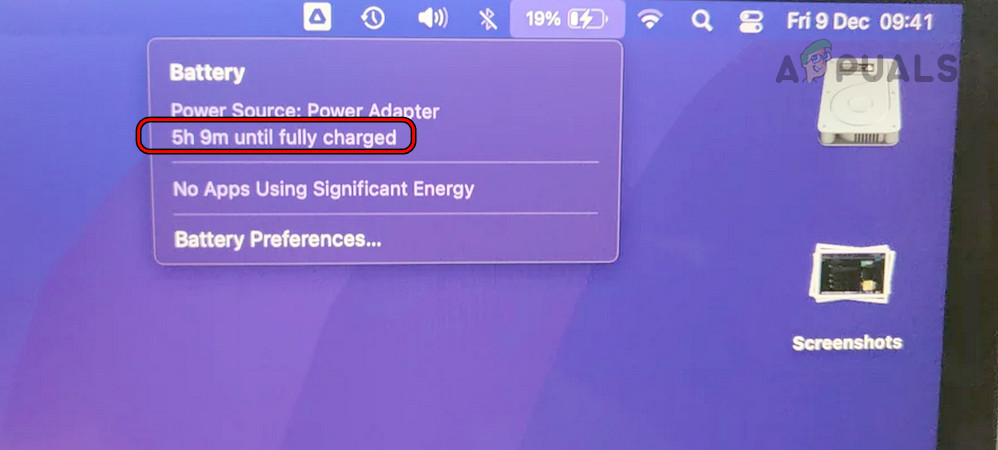
Common Scenarios
- MacBooks of all generations are reported to show slow charging, even brand-new ones.
- macOS updates can trigger the charging problem.
- Battery Preferences may show a long charging time of around 5, 10, or 20 hours.
- The charge may decrease even when the MacBook is plugged in.
- The charger’s charging light may turn orange.
- Power Information reveals input wattages significantly lower than the charger’s capacity (e.g., 12 watts).
- MacBook may experience heating up and sluggishness.
How to Fix a MacBook that is Charging Slow
Firstly, we will try to fix the slow charging on the MacBook with less invasive methods. If that fails, then we will move to methods such as reseating internal components or performing an internet-based macOS recovery.
1. Restart the MacBook
A malfunction in the power modules of the MacBook will not allow it to charge at regular speed. To overcome this, restart the MacBook.
Restart
- Open the Apple Menu and select Restart.
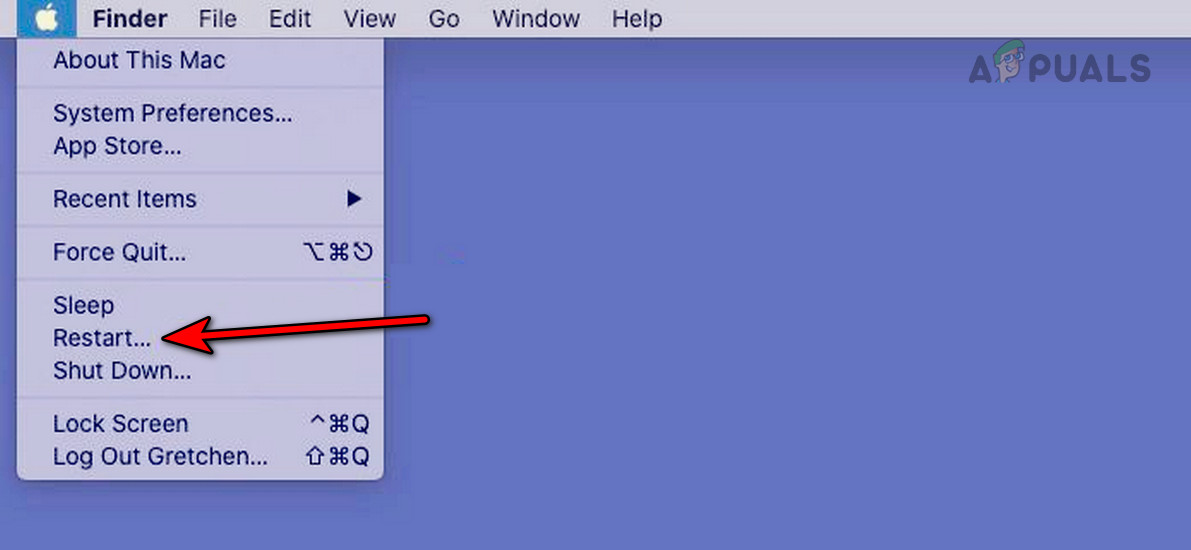
Restart the MacBook - Upon restart, check if the charging problem is solved.
Power Off and Charge
- Open the Apple menu and select Shut Down.
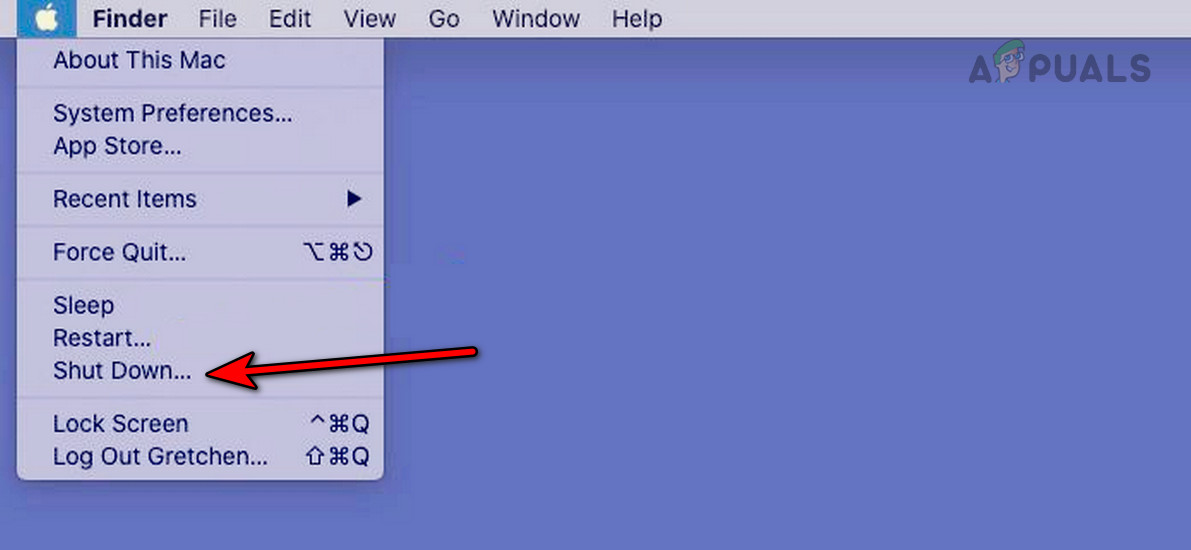
Shut Down the MacBook - Plug the charger and wait for extended time (e.g., 2 to 3 hours or overnight).
- Power on the MacBook and see if it is charging correctly.
Completely Drain the Battery
- Completely drain the battery of the MacBook and once it asks for charging, power it off.

Completely Drain the Battery of the MacBook - Put it on charging and wait for an hour.|
- Power on the MacBook and repeat the process twice.
- At last, power on the MacBook and see if its charging issue is cleared.
2. Boot the MacBook with Bare Minimum
If a MacBook is drawing excessive power due to a connected hardware device, the charging process will be prolonged because the charger can only supply the amount of current required by the hardware. In this case, starting up the MacBook with the minimal essential components will resolve the issue.
- Power off the MacBook and disconnect the devices connected to the MacBook (such as an external display or printer).

Disconnect External Devices from the MacBook - Power on the MacBook and see if it is charging correctly. If so, connect back the devices one by one and find the offending one.
3. Clean the Charging Port of the MacBook
If debris or dust has gone into the charging port of the MacBook, the charger will fail to properly connect with the MacBook or will keep on connecting/disconnecting, thus charging slowly. Here, cleaning the charging port will do the trick.
- Disconnect your charger from the MacBook and power it off.
- Use a toothpick to clean the charging port and power on the MacBook.

Clean the Charging Port of the MacBook - Slightly wiggle the charging cable into the charging port till the charging light turns green. You may have to try twice or thrice.
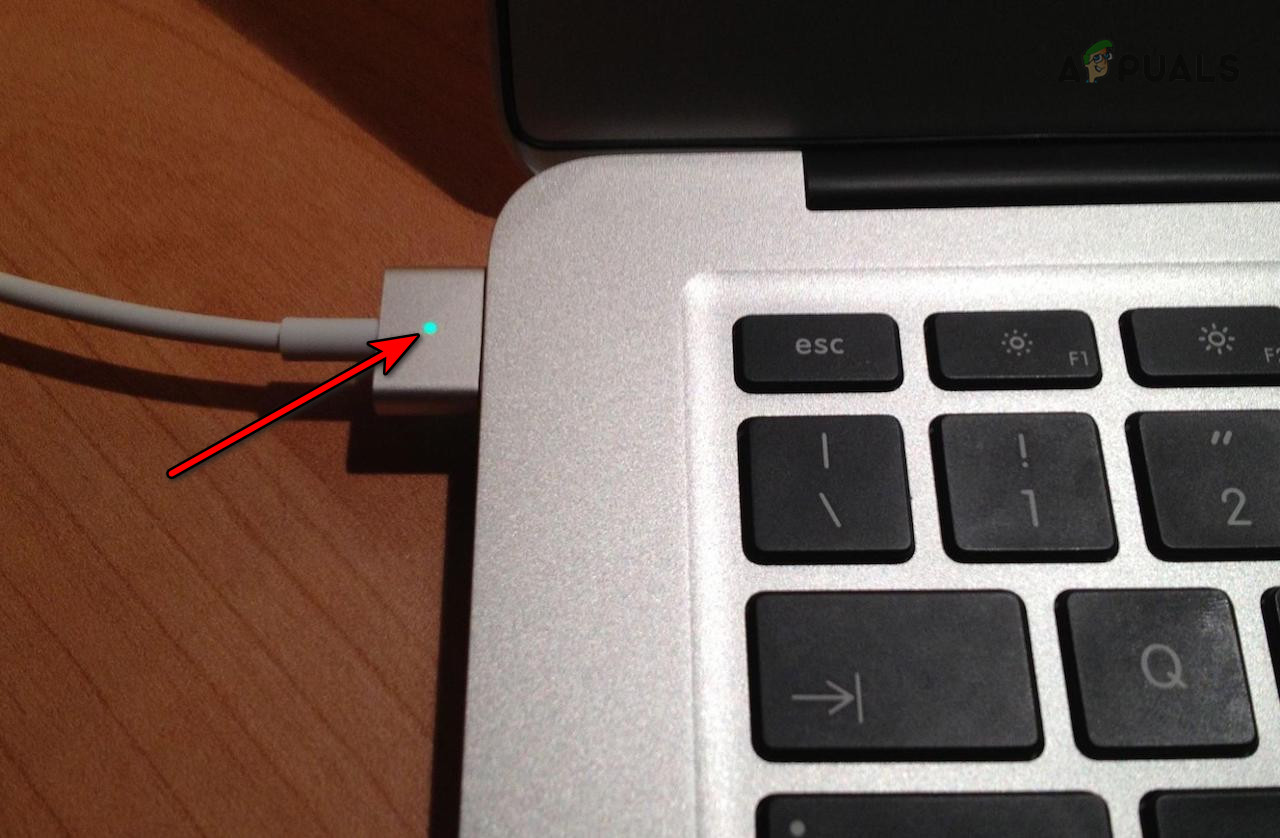
Slightly Wiggle the Charging Cable till its Light Turns Green - Once the light turns green, see if the charging issue is resolved.
4. Update the macOS of the MacBook to the Latest Build
The MacBook will charge slowly due to a bug in the macOS. Updating the OS of your MacBook will clear out any such bugs and thus solve the problem.
- Fully charge the battery of your MacBook (it will take time on slow charging) and create a backup of it.
- Open the MacBook’s Settings and go to General > Software Update.
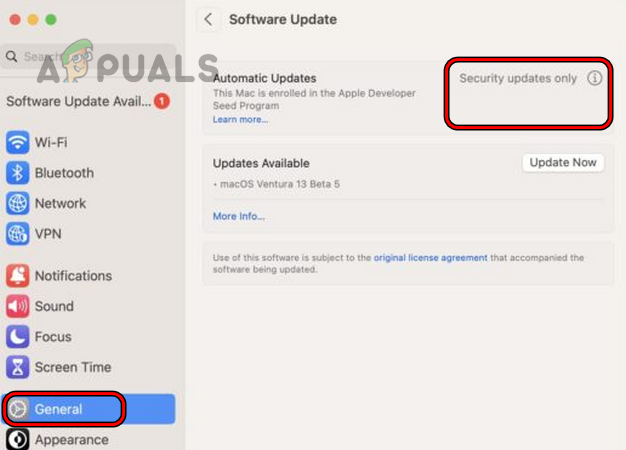
Check for macOS Updates - Check for available updates and install the updates shown.
- Restart the MacBook and see if the charging speed is back to normal.
5. Check for a Conflicting Application
If the MacBook’s resources are being excessively utilized by an application such as Desktop Docker or Logic Pro X, the laptop will divert all the available power to execute the said application. This will certainly slow down the laptop’s charging speed. This can be fixed by closing any resource-heavy application.
Close Running Applications and Processes
- Close all the running applications (such as Desktop Docker or Logic Pro X) on the MacBook and open the Activity Monitor.

Open Activity Monitor in Applications - Close all the processes that are not essential and see if the charging problem is solved.
Boot the MacBook into the Safe Mode
- Power off the MacBook and press the power button.
- Immediately press the Shift button till the login screen is shown.
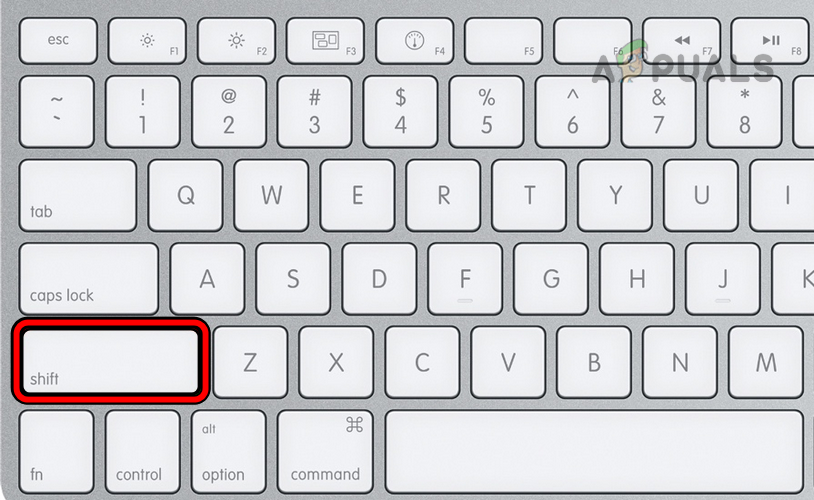
Hold the Shift Key While Power On Mac to Boot into the Safe Mode.png - Log in and see if the charging is back to normal. If so, check if any of the startup items are not causing the issue.
6. Perform an SMC Reset on the MacBook
SMC (System Management Controller) is a chip on the mainboard of your MacBook that handles settings such as temperature monitoring, status and keyboard lights, fan control, and most importantly, power management.
Failing to charge a MacBook at regular speed can occur if the SMC configurations are no longer valid. In this case, performing an SMC reset on the MacBook will fix the problem. This is only applicable to Intel MacBooks.
MacBooks with T2 Chips
- After unplugging the charger, power off the MacBook and press/hold the power button for 10 seconds.
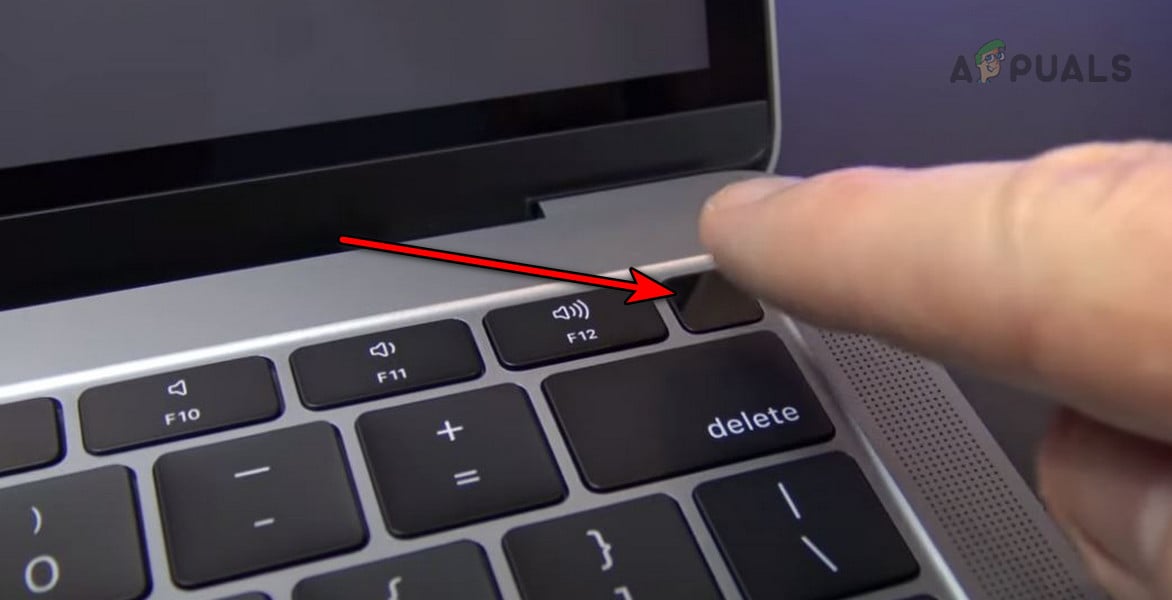
Perform an SMC Reset on a MacBook with T2 Chip - Release the button and wait for a few seconds.
- Press the Power button and see if the MacBook’s charging issue is resolved.
MacBooks without a T2 Chips with a Removeable Battery
- Power off the MacBook and disconnect its charger.
- Remove the battery of the MacBook and press/hold the power button.

Remove the Battery from the MacBook - Wait for 5 seconds and release the button.
- Put the battery back and connect the charger.
- Press the power button and see if the charging issue is cleared.
MacBooks without a T2 Chips with a Non-Removeable Battery
- Power off the MacBook and unplug its charger.
- Press and hold the following keys on the built-in keyboard:
Shift Option Control
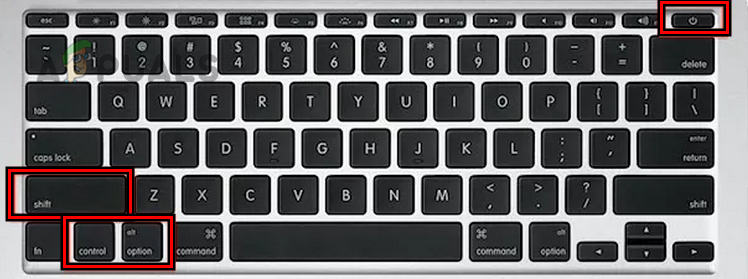
Perform an SMC Reset on the MacBook Air - While holding these keys, press and hold the Power button.
- Wait for 10 seconds and release the keys.
- Connect the charger to the MacBook and press the Power button. Check if the charging problem is solved.
7. Disable Optimized Battery Charging on the MacBook
In the latest macOS versions (macOS Big Sur or later), the MacBook uses Optimized Battery Charging to learn your charging habits and uses this technique to improve the lifespan of its battery.
You will get slow charging on the MacBook if this feature is disabling the charging or slowing it to match your charging habits. To solve this, disable the Optimized Battery Charging feature on the MacBook.
- Go to System Settings and open Battery.
- Next to the Battery Health, click on the i (Show Details) button and disable Optimized Battery Charging.

Disable Optimized Battery Charging on the MacBook - In the Menu bar, click on the Battery icon and select Charge to Full Now. See if this clears the problem.
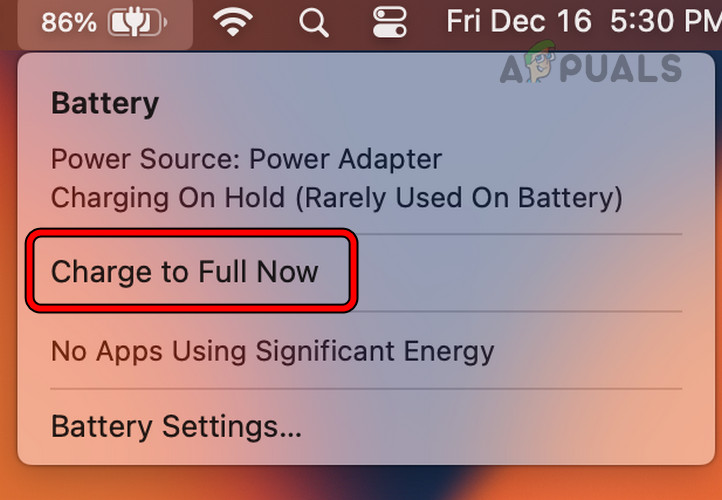
Select Charge to Full Now in the Battery Menu of the MacBook
8. Try Another Charger and Power Outlet
You will experience slow charging on your MacBook if the charger is faulty or if the power outlet is providing “bad” electricity to the charger. This issue can be resolved by using another power outlet and charger.
- Switch the charger to a different power outlet in a different room and check if the charging speed is back to normal.
- If not, arrange another charger (from a colleague, friend, or family) and put the MacBook on charging for at least an hour. Check if the charging problem is solved.

Try Another Charger with the MacBook - If this does not work and your MacBook supports charging through multiple ports, disconnect the charger from the port and wait for 3 seconds.
- Connect to a different port and check if the charging is working correctly.
9. Reseat the Internal Components of the MacBook
If an internal component of the power circuit of the MacBook has become loose, it can cause inexplicable power behavior in the laptop, including slow charging. This can be solved by reseating the internal components of the MacBook.
- Disconnect the charger from the MacBook and power off the MacBook.
- Remove the back cover of the laptop and disconnect the ribbon jumper that connects the motherboard with the power PCB.

Reseat RAMs of the MacBook - Reseat all the components one by one such as keyboard connectors, RAMs, etc.
- Connect back the jumper between the power PCB and motherboard.
- Connect the cover back to the MacBook and power it on.
- Connect the charger to the MacBook and see if it is charging correctly.
10. Perform a macOS Recovery Over the Internet
The MacBook will charge slowly if its core OS components dealing with the charging mechanism are damaged, and as a result, fail to properly control the charging procedure. Here, performing a macOS Recovery over the Internet will solve the problem.
- Restart the MacBook and press/hold the following keys on the built-in keyboard:
Option Command R
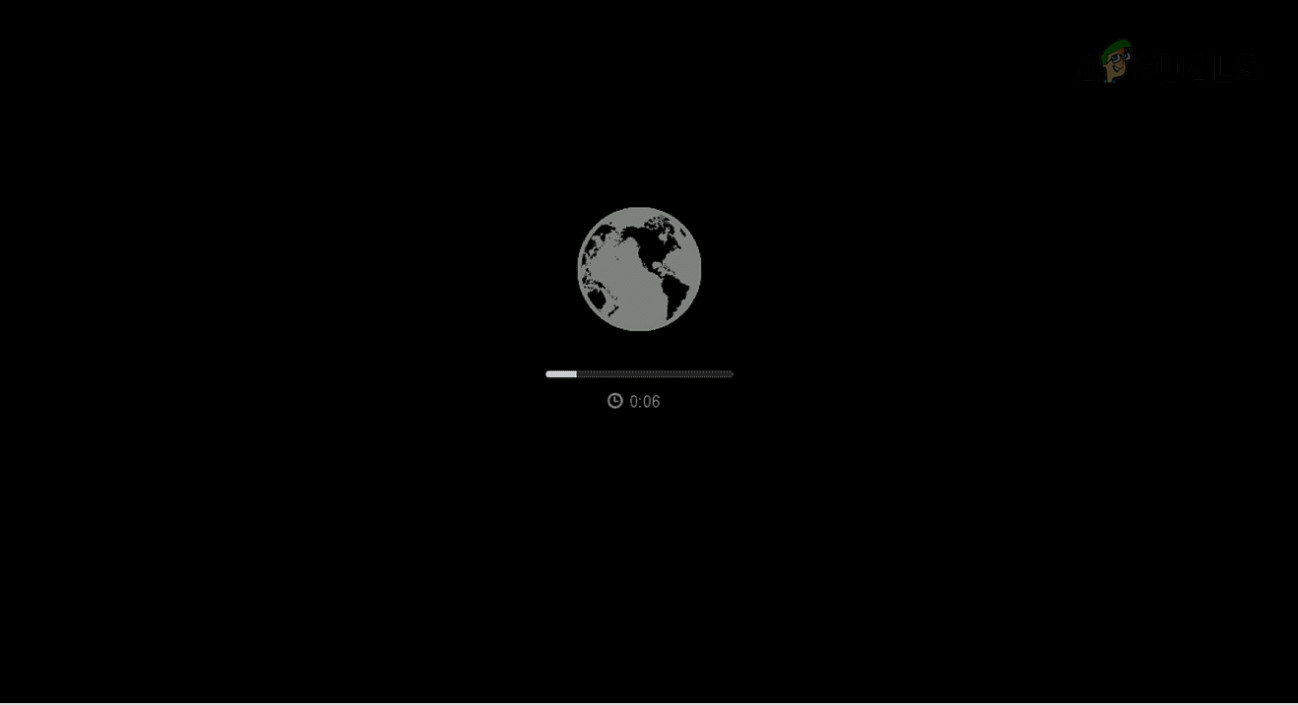
Boot the MacBook into the Internet Recovery Mode - On the startup screen, release these buttons and enter the password (if asked).
- Select the volume to recover (if required) and enter the administrator’s account (if required) password.
- In the Wi-Fi menu shown, connect the MacBook to your Wi-Fi network. If an Ethernet connection is available, you can skip this step.
- The recovery process will start and wait till the process is completed.
- In the macOS Recovery Utilities, select Reinstall macOS (version such as Ventura).
- Follow the prompts to complete the process and once done, set up the MacBook as per your requirements. Hopefully, this will clear the charging issue on the MacBook.
If the issue persists, contact Apple Support for further assistance. You may request a replacement if it’s still under warranty. Otherwise, have the MacBook checked for a hardware error. The error might be a faulty charging port, a malfunctioning battery, or a damaged motherboard.
 Reviewed by
Reviewed by 




